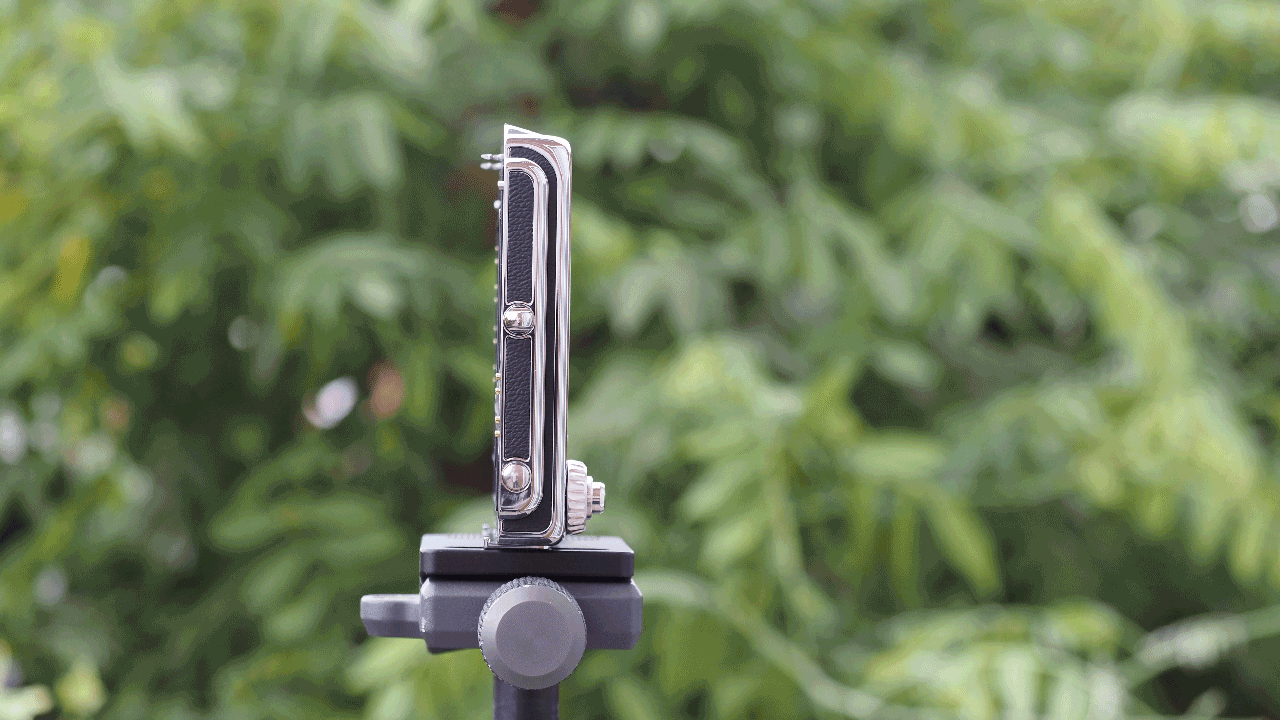Get your old Hasselblad 500 c/m out of retirement with the new CFV II 50C back!
We're bet you're glad you kept your old 'blad now. This classic pro camera of the 1970s/1980s is back with a new lease of life

Hasselblad has sent us a brand new 907X modular medium format camera for review, but because we asked (begged), they were kind enough to send us an old 500 c/m too so that we could try out the new CFV II 50C back supplied with the 907X.
Hasselblad said it would slot straight on to the back of the 500 c/m, but that sounded too good to be true, so we wanted to try it.
It's true. It's not only true, it's absurdly easy. You unhook the film back that comes with the 500 c/m and hook on the CFV II 50C. It's the same size, it uses the same mounting lugs (yes, decades later), and because the 500 c/m is a simple old beast, it carries on regardless.
You have to remember to power up the CFV II 50C before you start shooting, but from there it's straight into the classic Hasselblad routine – turn the dial to cock the shutter and mirror, compose the shot in the waist level finder, then press the shutter release on the front of the body to take a picture – which then gets captured by the digital back.
What's it like, using a Hasselblad 500 c/m today?
It's different! The waist level ground glass screen and the whole viewing/handling experience is just brilliant, but we forget how difficult it was to focus back then, even using split image focusing screens (which were usually half dark if you looked at them from the wrong angle). There's a flip-up magnifier to give you a bigger view, for critical focusing, which you achieve by turning a smooth but heavy focus ring on the lens.
We used the classic Zeiss Planar 80mm f/2.8, which has some interesting things you don't see on today's lenses, including a focus distance scale that's long enough and precise enough that the depth of field markers are actually useful.
The lens also has a shutter speed ring (the system uses in-lens shutters) and an aperture ring directly behind it. Confusing? Only at first, and it allows a VERY clever feature indeed – you can hold down a button/catch to turn both rings at once to apply different shutter speed and aperture combinations without changing the exposure.
The best camera deals, reviews, product advice, and unmissable photography news, direct to your inbox!
The 500 c/m's shutter action is loud and heavy, so while you can use this camera handheld it's going to take a bit of skill and practice, and it's probably more at home on a tripod with a cable release.
Our Hasselblad 907X 50C review is coming!
We're still putting the 907X 50C through our usual testing process, but we love it already. It might share the same sensor and AF tech as the Hasselblad X1D II, but it's a completely different user experience, and the modular design makes so much sense it will be interesting to see where Hasselblad takes this in the future.
The big news as far as we are concerned is the price. The Hasselblad 907X doesn't just bring your old film 'blad back to life, it's a modular system that competes on price with mirrorless models like the X1D II 50C, Fujifilm GFX 50S and (almost) the GFX 50R. Bravo!
• Pre-order the Hasselblad 907X from B&H
• Pre-order the Hasselblad 907X from Adorama
• Pre-order the Hasselblad 907X from Wex
Read more:
• Best medium format cameras
• Best Hasselblad lenses
• Best professional cameras
• Cheapest full frame cameras

Rod is an independent photography journalist and editor, and a long-standing Digital Camera World contributor, having previously worked as DCW's Group Reviews editor. Before that he has been technique editor on N-Photo, Head of Testing for the photography division and Camera Channel editor on TechRadar, as well as contributing to many other publications. He has been writing about photography technique, photo editing and digital cameras since they first appeared, and before that began his career writing about film photography. He has used and reviewed practically every interchangeable lens camera launched in the past 20 years, from entry-level DSLRs to medium format cameras, together with lenses, tripods, gimbals, light meters, camera bags and more. Rod has his own camera gear blog at fotovolo.com but also writes about photo-editing applications and techniques at lifeafterphotoshop.com


